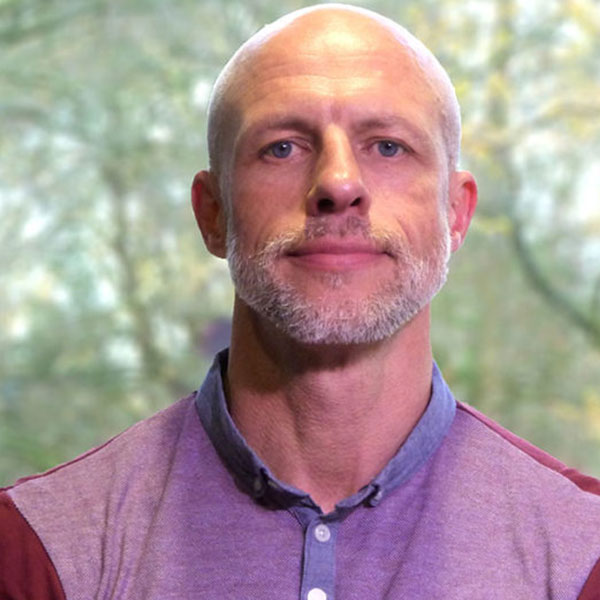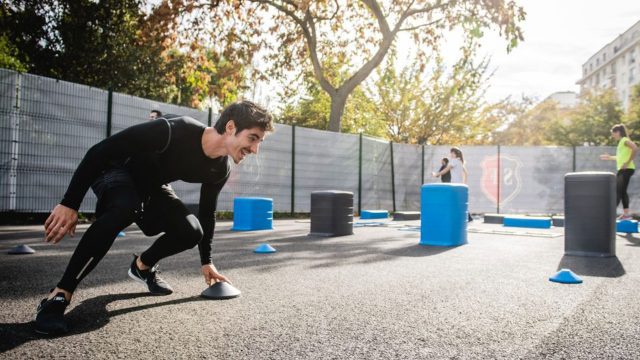Encouraging children to be physically active
The physical and mental health benefits of physical activity – and the risks of not being active – are well-known, yet more than one in four adults across the world are not doing the recommended amount of physical activity. The situation is even worse for adolescents, with 80% of them not sufficiently active. The need to encourage healthy active habits from a young age is, therefore, vital to reduce childhood obesity and improve global public health*.

A three-year project at Edge Hill, led by Professor Stuart Fairclough, has had a significant impact on the health and activity levels of hundreds of school children in the north of England. The outcomes have influenced Local Authorities’ approaches to physical activity in schools, and contributed to changes in school curricula, policies and practice around activity in and outside of Physical Education lessons. It also evaluated and improved a commercial exercise programme for schools, making it easier to access, more motivational and more flexible to meet the needs of all children, regardless of abilities.
“What we’re doing is a preventative approach. Get to children early, provide positive environments, structures, beliefs, knowledge and attitudes at a young age, and hopefully offset the known decline in activity as they grow up. If you can raise the age at which activity starts to tail off, you’re more likely to make a positive impact on their indicators of health and wellbeing later on.”
Stuart Fairclough, Professor of Physical Activity Education
Inactivity
Inactivity is the fourth biggest killer in the world, with around 3.2 million deaths per year attributable to a sedentary lifestyle – similar to the number of deaths caused by smoking*.
Born to move

A partnership between Edge Hill and leading fitness company, Les Mills International, led to the introduction of activity intervention programmes in local schools.
Professor Fairclough and colleagues worked with Les Mills to implement and evaluate the trial of ‘Born to Move’, an activity intervention designed to complement existing PE lessons. After the evaluation showed improvements in children’s physical activity and enjoyment, Professor Fairclough integrated Born to Move into a larger scale project, ‘Active Schools: Skelmersdale’, to bring targeted activity interventions to primary schools in an area of high deprivation and health inequalities.
The interventions reduced the children’s sedentary time and led to changes in the way the schools integrated physical activity in the school day. West Lancashire Sport Partnership (WLSP) subsequently trained its staff as Born to Move instructors, allowing the intervention to be rolled out to more than 60 primary schools in the region. WLSP also introduced specialist Health and Wellbeing Officer roles to improve physical activity in all schools in West Lancashire. The project was later highlighted as a model of good practice by the National Children’s Bureau in its report on childhood obesity.
As a result of Professor Fairclough’s research, Les Mills made significant changes, not just to the content of its programmes, but to its pricing policy, accessibility and consideration of the diverse needs of children. This has enabled substantially more children to engage with the programme in the UK and internationally.
“In light of the Edge Hill research evidence, we have modified our programmes to place greater emphasis on health and integration of physical activity into the school day.”
Director, West Lancashire Sport Partnership
Getting teen girls active

Adolescent girls are traditionally among the least active groups, and trying to engage them in physical activity is notoriously difficult.
Following the success of ‘Active Schools: Skelmersdale’, Professor Fairclough worked on a study looking at the effectiveness of peer mentors on girls’ physical activity levels. The Girls Peer Activity (GPACT) project paired physically active girls in Year 9 with their less active peers to motivate and inspire them to take part in activity. The peer mentors themselves were trained and mentored by Physical Education students from Edge Hill University. The research led to an increase in the girls’ physical activity, when additional after school activities were available, and also had an impact on the leadership skills and confidence of the student mentors, the peer mentors and the participants.
This research has informed changes to school policies and practice including adapting Physical Education curricula and integrating physical activity during lessons and beyond. By recommending these changes, the project has improved engagement and, ultimately, children’s health and wellbeing in schools.
“Looking at the preferences and needs of less traditionally ‘sporty’ girls and focusing on what the girls want has also become a focus of our Department policy and practice.”
Head of PE, GPACT participating school
Spotlight on Physical Education teachers

PE teachers are a major influence on children’ attitudes to, and enjoyment of, physical activity, making them an important factor in people’s lifelong love (or not) of physical activity.
Despite their value being acknowledged, there has been little research into the link between PE teachers’ practice and children’s engagement in physical activity, in part due to a lack of sensitive and valid measurement methods. Professor Fairclough validated a new observational tool, SOFIT+, to measure teaching practices during secondary school PE lessons and found a clear link between teacher practices during lessons and students’ participation in health-enhancing physical activity.
The resulting changes to the curriculum and practice have led to greater engagement in physical activity in schools.
“Based on Edge Hill research findings, we have modified our Physical Education lesson planning and delivery by increasing the time spent raising pupils’ heart rates and time actively engaged as much as possible.”
School PE Leader, SOFIT+ participating school
Our research means that
- More young people are more active more often, leading to better health throughout their lives.
- Schools have access to research that can help them make positive changes to curricula, teaching and policies that will improve their students’ engagement in physical activity.
- Commercial fitness companies have an evidence base to support improvements to their products, enabling more children to engage in physical activity in schools.
Find out more about Professor Stuart Fairclough’s research by viewing their profile on Pure:
Professor Stuart Fairclough's research